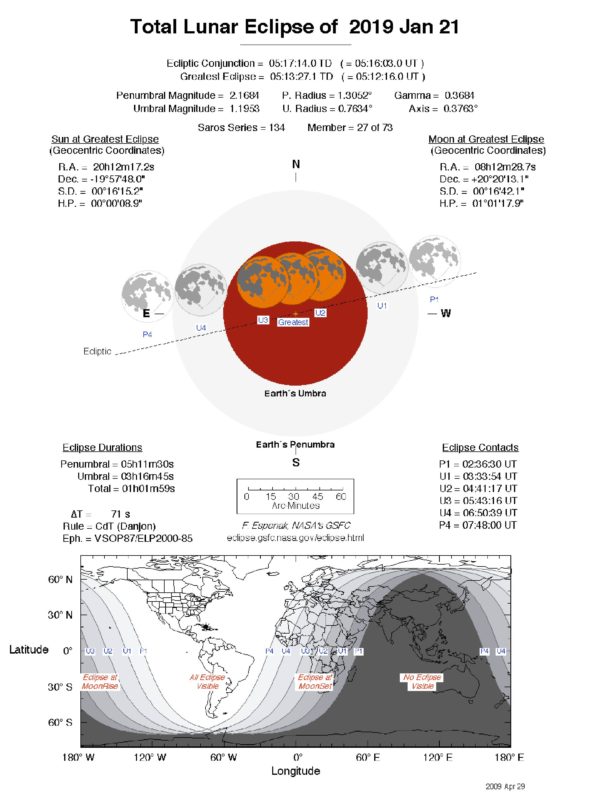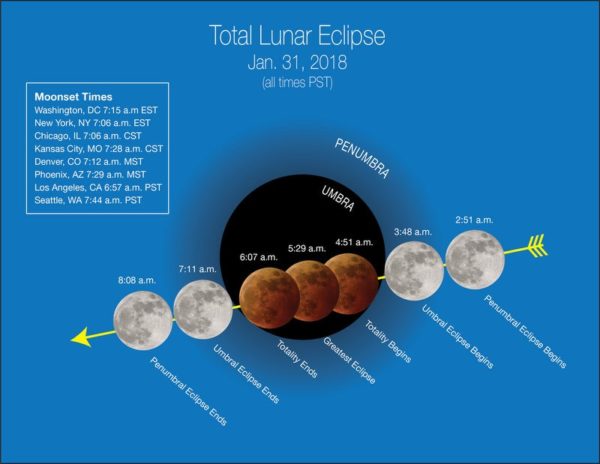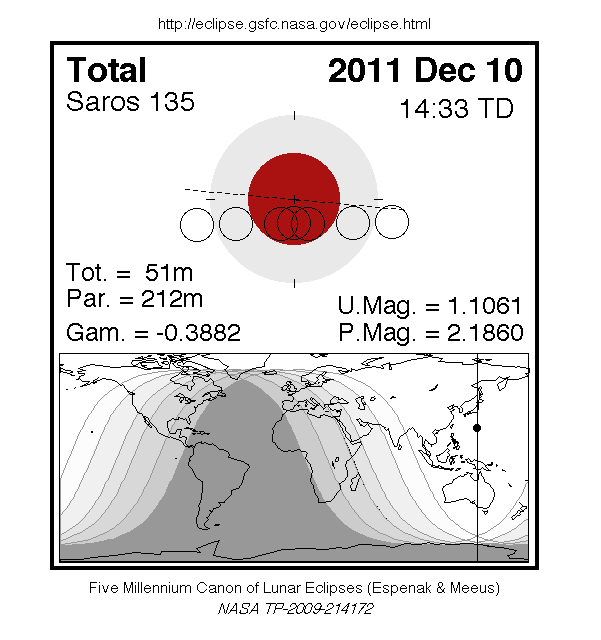
The scientific term for the Super Moon is “perigee moon.” The perigee moon occurs when the moon’s elliptical orbit is closest to the earth. During the night of May 5-6, the full moon reached perigee and it should have appeared 14% bigger and 30% brighter (than a full moon at apogee, farthest away).
The supermoon of March 19, 2011 (right), compared to an average moon of December 20, 2010 (left). Will you be able to notice with your eye alone that tonight’s full moon is bigger or brighter than usual? Astronomers say no, but it’ll be fun to stand outside under tonight’s full moon and know the moon is closer than it has been since March 19, 2011. Image Credit: Marco Langbroek, the Netherlands, via Wikimedia Commons.
At perigee, the moon lies only 356,955 kilometers (221,802 miles) away. Later this month, on May 19, the moon will swing out to apogee – its farthest point for the month – at 406,448 kilometers (252,555 miles) distant.
Even the proximity of full moon with perigee in today’s moon isn’t all that rare. The extra-close moon in all of these years – 2011, 2012, 2013, 2014 and 2015 – finds the full moon taking place within an hour or so of lunar perigee. More often than not, the closest perigee of the year comes on the day that the full moon and perigee coincide.
How often does the full moon coincide with perigee? Closest full moons recur in cycles of 14 lunar (synodic) months, because 14 lunar months almost exactly equal 15 returns to perigee. A lunar month refers to the time period between successive full moons, a mean period of 29.53059 days. An anomalistic month refers to successive returns to perigee, a period of 27.55455 days. Hence:
14 x 29.53059 days = 413.428 days
15 x 27.55455 days = 413.318 days
This time period is equal to about 1 year, 1 month, and 18 days. The full moon and perigee will realign again on June 23, 2013, because the 14th full moon after today’s full moon will fall on that date.
Moon closest to Earth
| Year |
Date |
Distance |
| 2011 |
March 19 |
356,575 km |
| 2012 |
May 6 |
356,955 km |
| 2013 |
June 23 |
356,991 km |
| 2014 |
August 10 |
356,896 km |
| 2015 |
September 28 |
356,877 km |
Looking further into the future, the perigee full moon on November 14, 2016 (356,509 km) will even be closer than the one on March 19, 2011 (356,575 km). The perigee full moon will come closer than 356,500 kilometers for the first time in the 21st century on November 25, 2034 (356,446 km). The closest moon of the 21st century will fall on December 6, 2052 (356,421 km).
via Biggest and Closest Full Moon
via Clouds play Supermoon spoiler – The Washington Post.





